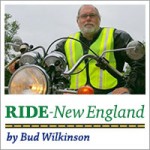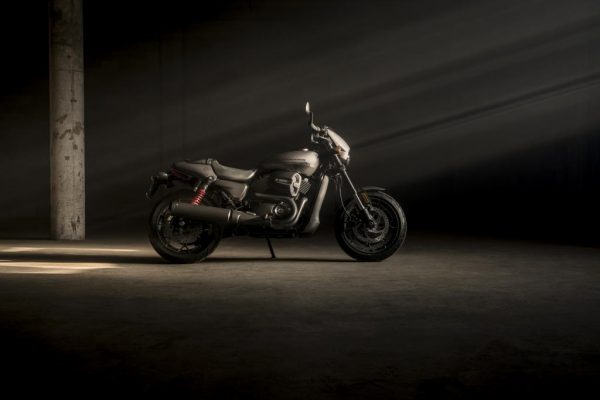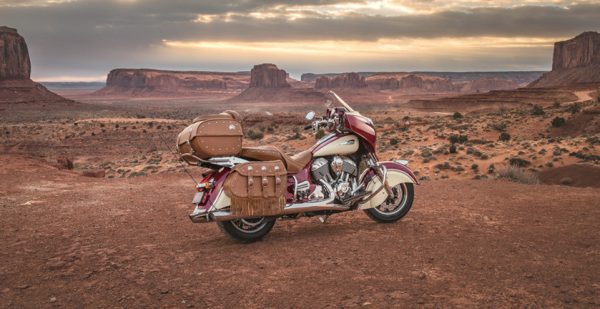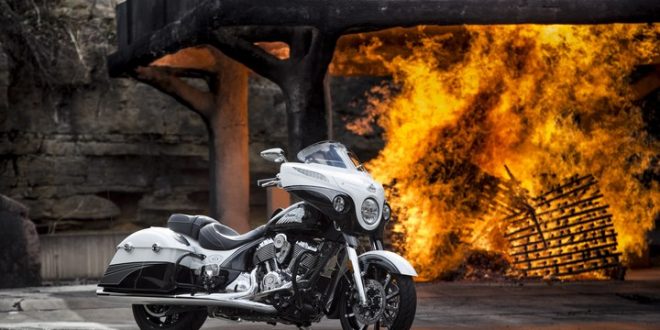HARWINTON, CT – It has been a schizophrenic end to winter. Warm one day, cold and windy the next, with occasional rain or snow. One day I’m toasty while riding to New Haven to meet a friend for lunch, the next I’m shivering while hauling logs for the wood stove. But,  Tuesday’s blizzard not withstanding, there have been signs that spring and extended pleasant weather may be here soon…
Tuesday’s blizzard not withstanding, there have been signs that spring and extended pleasant weather may be here soon…
Newly announced models from manufacturers are popping up in showrooms, while, locally, aspiring riders are actively signing up for Connecticut Rider Education Program courses at Naugatuck Valley Community College in Waterbury. We’re also seeing more and more motorcycles out on the roads and shoppers at dealerships.
At NVCC, all seven Basic Rider Course classes scheduled for weekends in April have been filled. Two of the nine classes slated for May are likewise booked already. More than 120 students have enrolled. “Compared to the past two years, we are ahead on registrations,” said John Purdy Jr., who oversees the CONREP program at NVCC.
The reason for the enrollment rise is “probably the weather,” said Purdy, who never puts his bikes away for winter. “Why do I have 4,000 miles riding this year?” he asked rhetorically, suggesting that by the time classes begin in a month, he’ll be fully booked into June. All the more reason to sign up asap if you’re looking to get an “M” endorsement on your driver’s license this year.

Harley-Davidson got a jump on the riding season on Thursday by announcing a new Street Rod model. Designed for younger, urban riders, the Street Rod is derived from the existing, entry-level Street 750 but with a “High Output Revolution X” engine that delivers 18 percent more horsepower and eight percent more torque than the Street 750.
The newcomer has a claimed 68.4 horsepower from its 46 cubic inch/750 cc motor, and the redline has been increased from 8,000 rpm to 9,000 rpm. The rake on the Street Rod has been steepened to 27 degrees from the 32 degrees on the Street 750, which makes the Street Rod a bit more sporty than cruiser.
The Street Rod has a base MSRP of $8,699 with ABS being a $750 option.
While some dealers have pooh-poohed the Street 500 and Street 750 since Harley-Davidson unveiled the smaller models in November 2013 – at a motorcycle show in Milan, Italy, no less – the company has remained steadfast in believing that it needs middle-weight machines to bring new riders to the sport and to the brand.
Might the Street Rod be the model that convinces Millennials and younger riders to try riding, and convinces dealers that Harley-Davidson’s longterm strategy is correct? One thing can be said for Harley-Davidson. The company is aggressively looking ahead to the day when its core following of gray beards gives up riding. It plans to introduce 50 new models – yes, 50 – over the next five years.
Rival Indian still doesn’t have a consumer model smaller than the 61-cubic-inch, 78-horsepower Scout Sixty – which has a base MSRP only $300 more than the Street Rod at $8,999 – but it does have a growing list of heavyweight cruisers. Its latest, introduced last month, is the touring variant Roadmaster Classic. It has leather saddlebags and trunk, and a starting MSRP of $26,999.

What Indian really needs to do is take its Scout FTR750 flat track racing model and come up with a street version; for young riders and for oldsters looking for something smaller to ride. It recently said it would sell the FTR750 to other racing teams for $50,000 a pop, but what about the rest of us and at a reasonable price?
With the arrival of spring in just nine days comes optimism. The year 2016 wasn’t particularly good for motorcycle manufacturers. Harley-Davidson saw its U.S. sales decline 3.9 percent with 161,658 units being sold. BMW sales in the U.S. plummeted 16 percent to 13,730 units, while Ducati sales dropped roughly nine percent on sales of 8,787 units.
Heck, Polaris even scrapped a brand altogether early this year, Victory. It plans to focus solely on Indian.
Maybe motorcycling is becoming like golf, a recreation of slipping popularity due to cost, time commitment and the skills necessary to enjoy. I prefer to think of it more like traditional news consumption, though. Often those in their teens and 20s eschew news because they’re living their lives; their faces buried in smart phones and tablets.
These folks don’t begin paying attention to news until life presents responsibilities – a spouse, kids, career – that can be affected by current events. Maybe motorcycling is similar. Maybe today’s youth won’t consider riding until life’s pressures ramp up to the point where the escape of riding can be fully understood and appreciated.
Unlike golf, it’s not possible to easily toss a motorcycle into the woods or a pond in a fit of anger. Motorcyling is relaxing. No wonder I switched to riding from golf.
I’m not an economist and I don’t have a crystal ball, but I sense the growing response of manufacturers to the recent downturn in sales and the introduction of many new models may force a rebound of the motorcycle market in 2017. I just wish cleaning a motorcycle were as easy as cleaning a golf ball.
(Originally published in the “Republican-American” on March 11, 2017.)
 Ride CT & Ride New England Serving New England, NYC and The Hudson Valley!
Ride CT & Ride New England Serving New England, NYC and The Hudson Valley!


